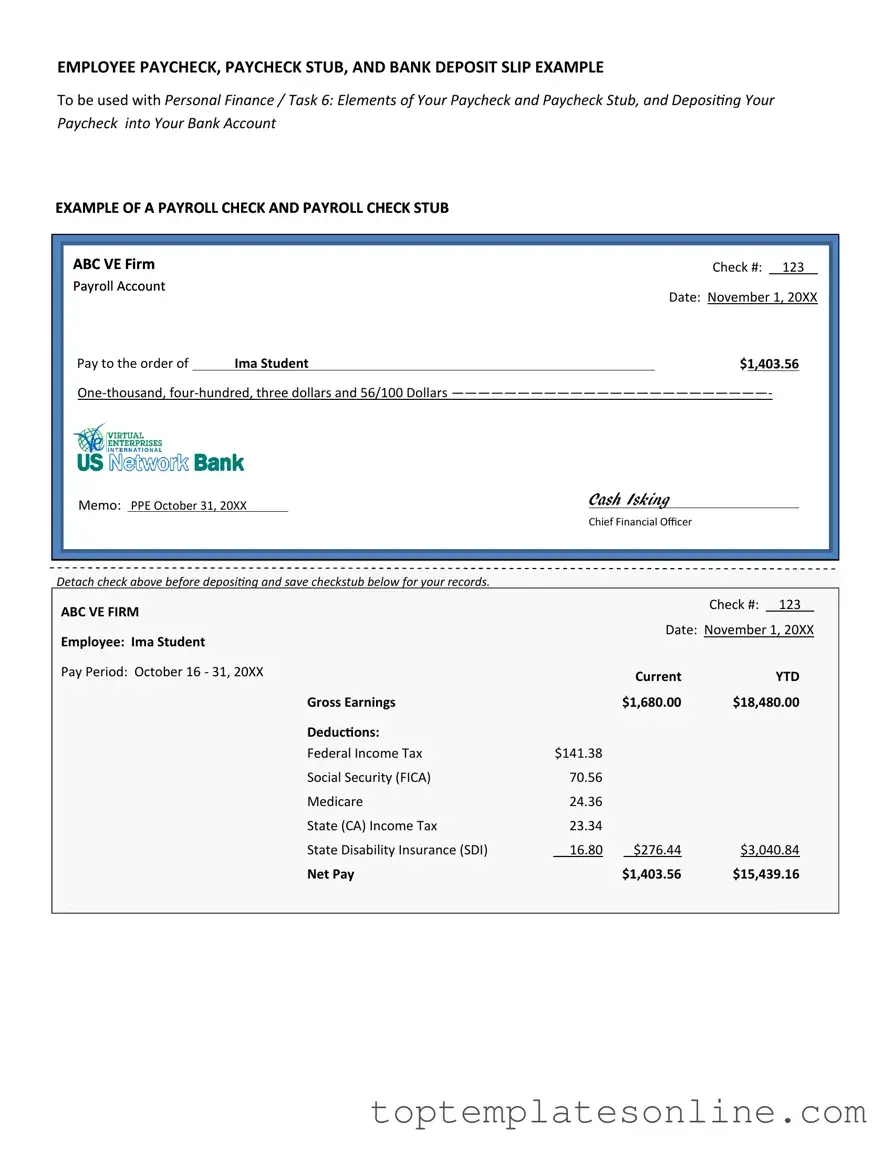The Payroll Check form plays a crucial role in the management of employee compensation within any organization. This form is designed to provide essential details regarding the payment process, ensuring that employees receive their earnings accurately and on time. Typically, it includes information such as the employee's name, identification number, and the amount being paid. Additionally, the form may outline deductions for taxes, benefits, or other withholdings, which are important for both the employer and the employee to understand. The layout of the form is structured to facilitate easy comprehension, allowing payroll staff to input and verify data efficiently. Furthermore, it serves as a record that can be referenced in case of any discrepancies or audits. By streamlining the payroll process, this form helps maintain transparency and trust between employers and their employees.
